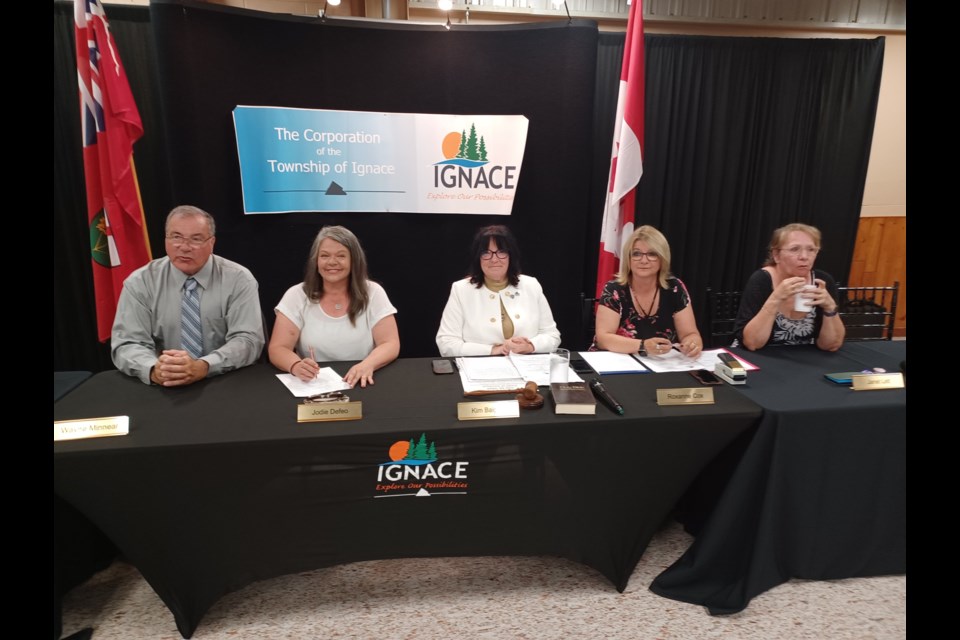IGNACE – The “deliberative democracy” that brought Ignace council to this week’s nuclear willingness decision is being questioned.
Democracy “really doesn’t” seem to be an apt term, Wendy O’Connor, a We the Nuclear Free North volunteer, said Thursday in an interview.
“And that’s one of our objections to the process,” she continued.
“South Bruce, for instance, is having an actual referendum on this in October, and I believe the question that (South Bruce) residents will be asked is a more direct question of whether they favour the presence of a nuclear waste facility near the community.”
Ignace residents “were asked an oblique question” about whether they’re in favour of their township continuing in a process with the Nuclear Waste Management Organization, she said.
Township council decided Wednesday to keep Ignace in the running as a potential host community for the NWMO’s proposed deep geological repository.
Roger Dufault, chair of the township’s resident willingness committee, reported to a special afternoon meeting of council that 77.3 per cent (495) of the 640 people who cast ballots in an April 26-30 community vote run by contractor With Chela Inc. indicated they want their municipality “to proceed as a potential host community.”
Ignace council unanimously approved a resolution adopting the committee’s recommendation to continue participating in the NWMO’s site selection process.
A site south of the Trans-Canada Highway between Ignace and Dryden is one of two finalists in the site selection process, the other finalist being a location near Lake Huron in southwestern Ontario.
Ignace’s decision makes it the first municipality to indicate it wishes to continue being a potential host community for a deep geological repository, commonly called a DGR.
The Municipality of South Bruce near Lake Huron is set to hold a referendum on the issue in late October.
Neither First Nation on whose territory the candidate sites lie has set a date for a community vote on willingness.
Wabigoon Lake Ojibway Nation near Dryden has said it will hold a vote this fall but has yet to set a date or question for the vote.
Saugeen Ojibway Nation, whose territory includes the South Bruce site, has indicated it won’t be holding a community vote until next year.
Ignace resident Darryl Tucker said before Wednesday’s meeting commenced that he was “really hoping for a yes vote.”
The anti-nuclear side’s arguments are “not backed up by science,” he said.
Another Ignace resident, Sheila Krahn, said after the 26-minute meeting’s adjournment that the process was flawed and “the people weren’t properly represented at all.”
“I made a special trip home today to be at this meeting because the people were not properly represented,” said Krahn, who is also a Fort William First Nation member.
“I don’t believe that the majority of people in Ignace support this project, but so many people didn’t trust the so-called ‘willingness process’ and didn’t participate (in the April community vote),” she said.
In a news release after the Ignace council meeting, We the Nuclear Free North characterized the April community vote as “an online poll” that didn’t ask a “direct question.”
“The NWMO siting process is all about getting to ‘yes,’ so they can claim some semblance of public support,” Brennain Lloyd of Northwatch, a We the Nuclear Free North member organization, said in the release.
“They missed the mark with this one. They’ve spent an estimated $10 million of electricity ratepayers’ money trying to convince Ignace to support their nuclear waste project, but at the end of the day what they bought was a questionable outcome from a largely unelected council of a community that has no authority and is not even in the same watershed as the NWMO’s candidate site.”
The DGR that the NWMO proposes would be a deep-underground facility, similar to one recently completed in Finland, for the placement of spent fuel from nuclear reactors.
The nuclear organization has said it will choose a site for Canada’s DGR by year-end. Construction is projected to start about 10 years later and take several years to complete.



